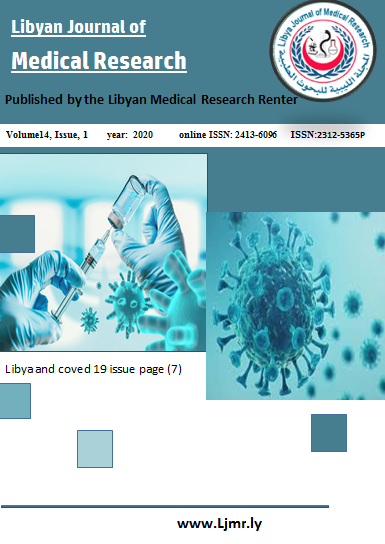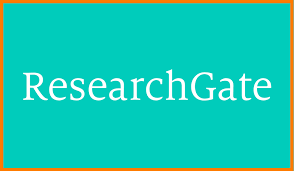Incidence and Pattern of Impacted Caninein Zawia
A Libyan Radiographic Analysis
DOI:
https://doi.org/10.54361/ljmr.v14i1.08Keywords:
Impaction, Canine, Unerupted teeth, Panoramic radiographs, LibyaAbstract
The aims of the present study was to evaluate the incidence and pattern of canine impaction in a population in Zawia city, using panoramic radiographs.507ortho-pantomographs were retrospectively examined from private clinics in Zawia city, Libya, between January 2018 and September 2019 to identify incidence of impacted canines. The radiographs showing canine impaction were further screened for; gender, site (upper and lower) and location (left or right or on both sides of the jaw) to study the effect it had on canine impaction.Out of 507panoramic radiographs, 38 cases were reported with one or more impacted canines, this study reported an incidence rate of 7.4%, with a male to female ratio of 1:3.1. Maxillary canine impactions(84.2%) were more frequent than mandibular canine impactions(15%), 26% of impactions occurred bilaterally. Maxillary impactions located on the left side were more than on the right side, while mandibular impactions were equally occurred on both sides. In conclusion, the incidence of canine impaction in a population in Zawia city/Libya was found to be 7.4%; this was within the range reported by previous studies among other populations
Downloads
References
Sharmila RJ. Incidence of Impacted Canine Using Orthopantomogram Pharm. Sci. Res. 2016;8(8): 921-922.
Adina-Simona C, Mariana P, Alina O. Clinical and Statistical Study on Canine Impaction. ActaMedicaMarisiensis. 2013;59:191-193.
Bedoy, MM, Park JHA. Review of the Diagnosis and Management of Impacted Maxillary Canines. The Journal of the American Dental Association. 2009;140: 1485-1493
Bishara SE. Impacted Maxillary Canines: A Review.American Journal of Orthodontics and Dentofacial Orthopedics, 1992; 101: 159-171.
Aqeel IL.The Prevalence of Impacted Maxillary Canine among Iraqi Patients of Al-Basrah City J BaghColl Dentistry. 2016;28(1):73-77.
Fardi A, Kondilidon-Sidira A, Bachour Z, Parisis N, Tsirlis A. Incidence of impacted and supranumerary teeth-a radiografi c study in a North Greek population. Med Oral Patol Oral CirBucal. 2011;16(1):55-61.
Aktan AM, Kara S, Akgünlü F, Malkoç S. The incidence of canine transmigration and tooth impaction in a Turkish subpopulationEuropean Journal of Orthodontics, 2010;32(5): 575-581.
Litsas G, AcarAA. Review of early displaced maxillary canines: etiology, diagnosis and interceptive treatment. The Open Dentistry Journal.2011; 5: 39-47.
Arandi N, Rabi T, Mustafa S. the prevalence of impacted maxillary canines in a palesti- nian population: a retrospective study. Open Journal of Stomatology. 2017.
Alyami B, et al. Prevalence and pattern of impacted canines in Najran, South Western Saudi Arabian population.SaudiDental Journal. 2019; 10: 002
Altaee, Zena. Incidence of impacted maxillary canine and associated with maxillary lateral incisor anomalies in ramadi city. Asian Journal of Science and Technology. 5(3): 2014; 226-229.
Patil S, Maheshwari S, Santosh BS, Khandelwal S. Prevalence of impacted canines in population of western part of India. Univ Res J Dent 2014;4:148-152.
Aydin U, Yilmaz HH, Yildirim D.Incidence of canine impaction and transmigration in a patient population Dentomaxillofacial Radiology 2004; 33(3): 164-
Downloads
Published
Issue
Section
License
Copyright (c) 2020 Mohamed Rohuma, Rema M Hwas, Faten I Bshena (Author)

This work is licensed under a Creative Commons Attribution-NonCommercial-NoDerivatives 4.0 International License.
Open Access Policy
Libyan journal of medical Research (LJMR).is an open journal, therefore there are no fees required for downloading any publication from the journal website by authors, readers, and institution.
The journal applies the license of CC BY (a Creative Commons Attribution 4.0 International license). This license allows authors to keep ownership f the copyright of their papers. But this license permits any user to download , print out, extract, reuse, archive, and distribute the article, so long as appropriate credit is given to the authors and the source of the work.
The license ensures that the article will be available as widely as possible and that the article can be included in any scientific archive.
Editorial Policy
The publication of an article in a peer reviewed journal is an essential model for Libyan journal of medical Research (LJMR). It is necessary to agree upon standards of expected ethical behavior for all parties involved in the act of publishing: the author, the journal editorial, the peer reviewer and the publisher.
Any manuscript or substantial parts of it, submitted to the journal must not be under consideration by any other journal. In general, the manuscript should not have already been published in any journal or other citable form, although it may have been deposited on a preprint server. Authors are required to ensure that no material submitted as part of a manuscript infringes existing copyrights, or the rights of a third party.
Authorship Policy
The manuscript authorship should be limited to those who have made a significant contribution and intellectual input to the research submitted to the journal, including design, performance, interpretation of the reported study, and writing the manuscript. All those who have made significant contributions should be listed as co-authors.
Others who have participated in certain substantive aspects of the manuscript but without intellectual input should only be recognized in the acknowledgements section of the manuscript. Also, one of the authors should be selected as the corresponding author to communicate with the journal and approve the final version of the manuscript for publication in the LJMR.
Peer-review Policy
- All the manuscripts submitted to LJMR will be subjected to the double-blinded peer-review process;
- The manuscript will be reviewed by two suitable experts in the respective subject area.
- Reports of all the reviewers will be considered while deciding on acceptance/revision or rejection of a manuscript.
- Editor-In-Chief will make the final decision, based on the reviewer’s comments.
- Editor-In-Chief can ask one or more advisory board members for their suggestions upon a manuscript, before making the final decision.
- Associate editor and review editors provide administrative support to maintain the integrity of the peer-review process.
- In case, authors challenge the editor’s negative decision with suitable arguments, the manuscript can be sent to one more reviewer and the final decision will be made based upon his recommendations.














